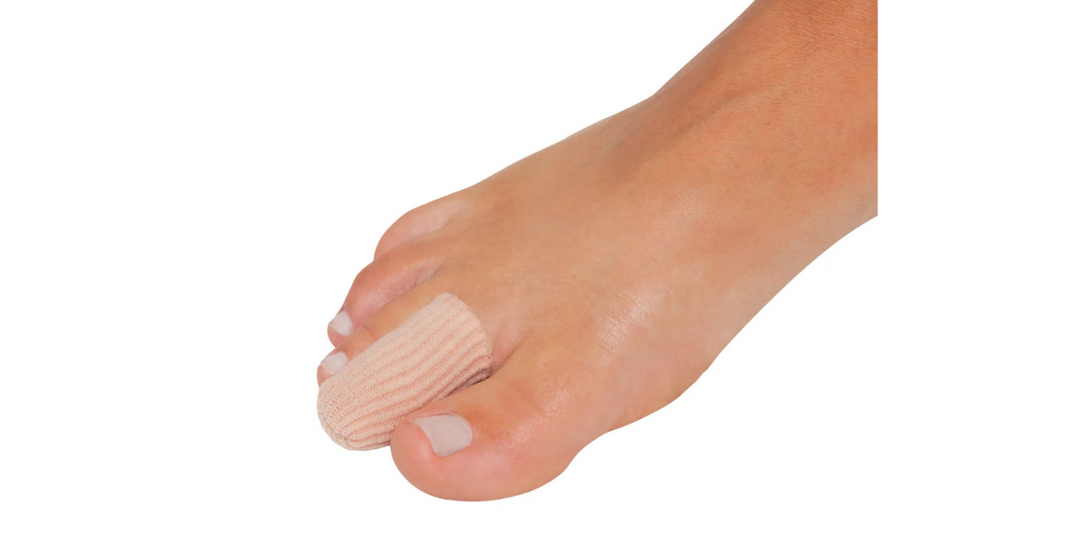How Massage Can Help Ease the Symptoms of Plantar Fasciitis
Relieving Foot Pain: How Massage Can Help Ease the Symptoms of Plantar Fasciitis
Do you suffer from foot pain that just won't go away? If so, you're not alone. Plantar fasciitis is a common condition that affects millions of people worldwide. But the good news is that relief may be closer than you think. In this blog post we will explore how massage can help ease the symptoms of plantar fasciitis, providing you with much-needed comfort and relief.
Massage therapy has long been recognised for its healing benefits, and when it comes to foot pain, it can be a game-changer. By targeting the inflamed plantar fascia tissue, it can help reduce pain and inflammation, improve circulation, and promote healing. Additionally, massage can alleviate tension in the surrounding muscles, reducing stress on the affected area.
Whether you're a seasoned athlete or simply spend long hours on your feet, massage therapy can be a valuable tool in your journey to relieve foot pain caused by plantar fasciitis. So, if you're tired of suffering and ready for some much-needed relief, read on to learn more about the benefits of massage for plantar fasciitis.
Understanding Plantar Fasciitis and Its Symptoms
Plantar fasciitis is a condition characterised by inflammation and pain in the plantar fascia, a thick band of tissue that runs along the bottom of the foot. It is caused by repetitive stress and strain on the plantar fascia, leading to small tears and inflammation. This condition is often experienced as a sharp, stabbing pain in the heel or arch of the foot, especially upon waking up in the morning or after prolonged periods of rest.
Other symptoms of plantar fasciitis include:
Heel pain that worsens with activity
Tenderness and swelling in the affected area
Difficulty in walking or standing for long periods
Stiffness and limited range of motion in the foot
The condition can be quite debilitating, affecting daily activities and quality of life. Fortunately, massage therapy can play a significant role in managing and relieving the symptoms of plantar fasciitis.
The Role of Massage Therapy in Managing Foot Pain
Massage therapy has proven to be effective in managing various musculoskeletal conditions, including plantar fasciitis. When it comes to foot pain, massage therapy can be a game-changer.
One of the primary benefits of massage for plantar fasciitis is its ability to target the inflamed plantar fascia tissue. Massage can be used to reduce pain and inflammation in the affected area. By increasing blood flow to the area, massage helps to promote healing and reduce swelling.
Massage therapy also works by alleviating tension in the surrounding muscles. Tight calf muscles, for example, can contribute to the strain on the plantar fascia. By releasing tension in these muscles, massage can reduce stress on the plantar fascia, providing relief from pain and discomfort.
Additionally, massage therapy promotes relaxation and reduces stress. Chronic pain can cause emotional and physical stress, which can exacerbate the symptoms of plantar fasciitis. By reducing stress levels, massage therapy can help improve overall well-being and aid in the healing process.
Benefits of Massage for Plantar Fasciitis
Massage therapy offers several benefits for individuals suffering from plantar fasciitis. Here are some of the key advantages:
Pain reduction: Massage can help alleviate pain by targeting the inflamed plantar fascia tissue and releasing tension in the surrounding muscles.
Inflammation reduction: Massage helps to increase blood flow to the affected area, which can reduce inflammation and promote healing.
Increased flexibility and range of motion: Massage can help improve flexibility and range of motion in the foot and ankle, reducing stiffness and improving overall mobility.
Faster recovery: Regular foot massage can help speed up the recovery process by promoting tissue regeneration and reducing scar tissue formation.
By incorporating massage therapy into your treatment plan for plantar fasciitis, you can experience significant relief from pain and discomfort, and improve your overall quality of life.
Self-Massage Techniques for Plantar Fasciitis
There are several self-massage techniques that you can perform at home to help relieve pain and discomfort associated with plantar fasciitis.
Foot rolling: Sit in a chair and place a tennis ball, frozen water bottle or use a specially designed foot roller such as the pediroller or realign arch ball shown below on the floor. Roll your foot over the your massager, applying gentle pressure. Focus on the arch and heel areas, as these are often the most tender spots for individuals with plantar fasciitis. Repeat this rolling motion for a few minutes on each foot.
At The Foot Care Shop we have a number of massage aids designed especially for the feet. If you are looking for a foot massager we recommend the following products:
Arch stretching: While seated, cross one leg over the opposite knee. Use your hand to hold the toes of the crossed leg and gently pull them back, stretching the arch of your foot. Hold this stretch for 15-30 seconds, then release. Repeat the stretch on the other foot.
We also recommended the Fasciitis fighter to help with arch excercises and stregthening
Toe stretches: Sit in a chair and place a towel on the floor in front of you. Use your toes to grip the towel and pull it toward you, then release. Repeat this motion for a few minutes on each foot. This exercise helps to stretch the muscles and fascia in the foot, providing relief from pain and tension.
Orthotic inserts: Custom orthotic inserts can provide support and cushioning to the foot, reducing stress on the plantar fascia. These inserts can be worn in your shoes and help distribute the pressure more evenly across the foot. See our link below for our entire collection of orthotics and insoles at The Foot Care Shop
Night Compression: Night plantar fasciitis sleeves help keep the foot and ankle in a stretched position while you sleep. They help stretch the plantar fascia and Achilles tendon, reducing morning pain and stiffness.
Physical therapy: Working with a physical therapist can help you develop a personalised treatment plan for plantar fasciitis. They can guide you through specific exercises and techniques to improve flexibility, strength, and stability in the foot and lower leg.
Topical creams and ointments: Over-the-counter creams and ointments containing anti-inflammatory ingredients such as arnica or menthol can provide temporary relief from pain and inflammation. Apply these creams according to the manufacturer's instructions. Remember, these complementary treatments should be used in conjunction with professional medical advice and treatment. It's important to consult with a healthcare professional to determine the most appropriate treatment plan for your specific condition. Tips for Preventing and Managing Plantar Fasciitis While massage therapy and complementary treatments can provide significant relief from plantar fasciitis, it's important to take steps to prevent the condition from recurring. Here are some tips to help prevent and manage plantar fasciitis:
Wear supportive footwear: Invest in well-fitting, supportive shoes that provide adequate arch support and cushioning. Avoid wearing worn-out or ill-fitting shoes that can contribute to foot pain and strain on the plantar fascia.
Use proper footwear for activities: If you engage in activities that put stress on the feet, such as running or playing sports, make sure to wear appropriate footwear designed for those activities. This can help reduce the risk of developing plantar fasciitis.
Warm up and stretch before exercise: Prior to engaging in any physical activity, warm up your muscles and perform stretching exercises for the feet, calves, and Achilles tendon. This can help prepare your muscles and reduce the risk of injury.
Manage body weight: Maintaining a healthy body weight can help reduce stress on the feet and lower extremities. If you're overweight, losing weight can help alleviate the strain on the plantar fascia.
Avoid prolonged periods of standing or walking: If your job requires long hours of standing or walking, take frequent breaks to rest and elevate your feet. This can help reduce the strain on the plantar fascia and prevent the development of plantar fasciitis.
Listen to your body: Pay attention to any signs of foot pain or discomfort and take appropriate measures to address them. Ignoring the early signs of plantar fasciitis can lead to chronic pain and more severe symptoms. By incorporating these preventive measures into your lifestyle, you can reduce the risk of developing plantar fasciitis and manage the condition effectively.
When to Seek Professional Help for Foot Pain While self-care measures, including massage therapy and complementary treatments, can provide relief for many individuals with plantar fasciitis, it's essential to seek professional help if your symptoms persist or worsen. A podiatrist can help diagnose the condition accurately and develop a comprehensive treatment plan tailored to your specific needs. Here are some signs that indicate it's time to seek professional help for your foot pain:
Severe pain: If you experience severe, debilitating pain that affects your daily activities and quality of life, it's crucial to seek medical attention.
Limited mobility: If your foot pain is accompanied by limited range of motion, difficulty walking or standing, or a noticeable decrease in flexibility, it's important to consult with a healthcare professional.
Symptoms lasting more than week: If your foot pain persists for more than a week despite self-care measures and conservative treatments, it's time to seek professional help.
Development of new symptoms: If you experience new symptoms, such as numbness or tingling in the foot, or pain that radiates up the leg, it's important to consult with a healthcare professional to rule out other underlying conditions. Remember, early intervention is key to effectively managing plantar fasciitis and preventing further complications. Don't hesitate to reach out to a healthcare professional if you have concerns about your foot pain.
Conclusion If you're suffering from plantar fasciitis, massage therapy can be a valuable tool in your journey to find relief. By reducing pain and inflammation, improving circulation, and promoting healing, massage can help ease the symptoms of plantar fasciitis and improve your overall well-being. Whether you choose to seek professional massage therapy or perform self-massage techniques at home, incorporating massage into your treatment plan can provide significant benefits.Remember, while massage therapy can be effective in managing plantar fasciitis, it should be used in conjunction with other treatment modalities, such as stretching exercises, orthotic inserts, and physical therapy. By taking a comprehensive approach to your treatment, you can experience long-term relief









Leave a comment